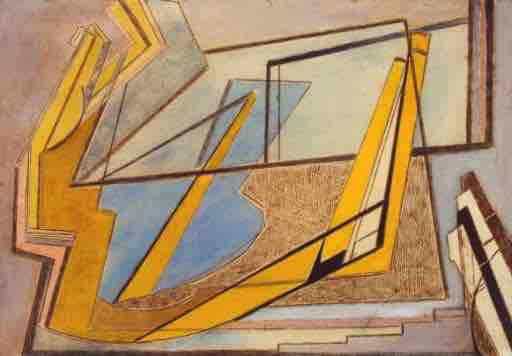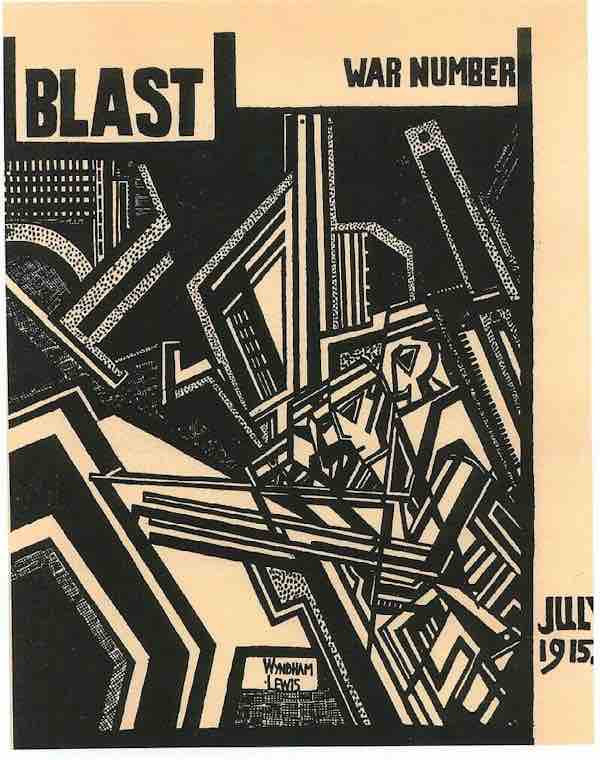20th century
Vorticism was a brief modernist movement in British art and poetry during the early twentieth century. It was based in London but was international in make-up and ambition. As a movement, Vorticism rejected the typical landscapes and nudes of the time in favor of a geometric style tending towards abstraction.
The Vorticism group began with the Rebel Art Centre established by Wyndham Lewis as a break with other traditional schools, and had its intellectual and artistic roots in the Bloomsbury Group, Cubism, and Futurism. Lewis saw Vorticism as an independent alternative to Cubism, Futurism, and Expressionism. Though the style grew out of Cubism, it is more closely related to Futurism in its embrace of dynamism, the machine age, and all things modern. However, Vorticism diverged from both Cubism and Futurism in the way it tried to capture movement in an image. In Vorticist paintings, modern life is shown as an array of bold lines and harsh colors drawing the viewer's eye into the center of the canvas .

The Lake
Lawrence Atkinson, one of the signatories of BLAST, painted The Lake (pen and watercolor on paper) circa 1915-20 inspired by Vorticism.
The Vorticists published two issues of the literary magazine BLAST, edited by Lewis, in June 1914 and July 1915 . It contained work by Ezra Pound, T. S. Eliot, and by the Vorticists themselves. Its typographical adventurousness was cited by El Lissitzky as one of the major forerunners of the revolution in graphic design in the 1920s and 1930s.

BLAST Cover
The cover of the 1915 BLAST demonstrates the Vorticist Movement's use of geometric style and sharp angles in print and design.
Paintings and sculpture shown at the Rebel Art Centre in 1914, before the formation of the Vorticist Group, were considered an "experimental work" by Lewis, Wadsworth, Shakespear and others, who used angular simplification and abstraction in their paintings. This work was contemporary with and comparable to abstraction by continental European artists such as Kandinski, František Kupka, and the Russian Rayist Group. The Vorticists held only one official exhibition in 1915 at the Doré Gallery in London. After this, the movement broke up, largely due to the onset of World War I and public apathy towards their work.